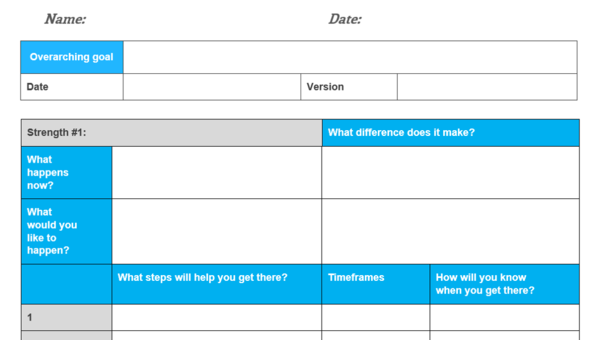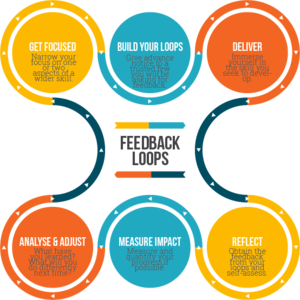FASTLEADER BRIEFING
Critical message: if your personal growth plan (PGP) isn’t close to hand, regularly referred to, and clearly understood by yourself and your manager, your personal growth as an employee and leader is being impaired.
Personal growth plans - otherwise known as individual development plans - are, contrary to the opinion of many managers, not an invention of the Human Resources team to waste the time of managers and their direct reports. For most of the people we work with at FASTLEAD, it is one of the most important documents a developing leader can have.
Why is a PGP so important? Because a PGP identifies key areas for improvement in skills and knowledge (and possibly attitude) that will enable the individual in question to fulfil their working aspirations. These aspirations may be promotion, further income growth, new job opportunities and responsibilities, or simply wanting to do the current role really well. A well constructed PGP acts as a bridge between today’s work and the work you want to be able to do tomorrow.
What does a well-constructed PGP look like? Every organisation has different templates and processes of course, but there are some underlying principles that ought to be common. In our view, really good PGPs are:
Focused: It isn’t possible to work on lots of things at once, so good plans should focus on building on one strength, and improving capability in one or two growth areas; this may mean the PGP is for four or six months, rather than a year, but that’s fine.
Example:
Strength 1. Setting Priorities Growth Areas 2. Providing Timely Feedback 3. Strategic ThinkingBehavioural: Good plans have specific descriptions of what the current behaviour is (e.g., not providing direct reports with effective feedback) and the impact of that behaviour, as well a precise description of what the desired behaviour is and the impact that will have (e.g., providing timely, fair, effective feedback, in the moment, to reports that help them quickly master new skills and knowledge and make them more effective).
Example:
Strength: Setting Priorities Current You have advanced skills when it comes to prioritising work, and making sure the most important things get done on time and well Desired We want you to develop this capability in all of your team members via training and constant feedback. This will lead to a high performing, focused team that consistently gets the results that matter most.Specific: Good plans describe specific actions, activities, and processes that need to be undertaken to achieve the objective. Note – the plan does not use “generalisations”, such as “I must spend more time with my team members”.
Example:
Strength: Setting Priorities Current You have advanced skills when it comes to prioritising work, and making sure the most important things get done on time and well. Desired We want you to develop this capability in all of your team members via training and constant feedback. This will lead to a high performing, focused team that consistently gets the results that matter most. Actions 1. Create and execute three short training sessions on prioritisation for your team; liaise with Learning and development about material they may have that you can use2. Re-clarify with each team member what their priority work should be, and in what order the work should be done, and why;
3. Provide immediate coaching (asking questions) when you see team members working on the non-priority work; Provide positive feedback when you see team members changing their working habits and focusing on priority work.
Measurable: Good plans help both the person being developed, and their manager, know what success looks like and how to measure whether you have got there. It uses SMART goals.
Example:
Strength: Setting Priorities Current: You have advanced skills when it comes to prioritising work, and making sure the most important things get done on time and well Desired: We want you to develop this capability in all of your team members via training and constant feedback. This will lead to a high performing, focused team that consistently gets the results that matter most. Actions 1. Create and execute three short training sessions on prioritisation for your team; liaise with Learning and Development about material they may have that you can use; delivered by the end of July, with all team members attending.2. Re-clarify with each team member what their priority work should be, and in what order the work should be done, and why; by the end of June, for all team members.
3. Provide immediate coaching (asking questions) when you see team members working on the non-priority work; ongoing, during August and September, but ensure you check in on priorities at least twice a month.
4. Provide positive feedback when you see team members changing their working habits and focusing on priority work; ongoing, but audit your team in September to discover who is developing the right habits, and who is not.
5. Check-ins with key stakeholders – your manager, and also key clients of your team, that the new behaviour is being seen and having the desired impact; last week of September.
You can see from the above construct that suddenly this growth plan is
A. Building on the individual’s strengths and transferring these skills to their team, but it is also
A. Building on the individual’s training and leadership capabilities. And everyone knows what needs to happen, by when, and what success looks like.
This topic is covered in more detail in the Fastlead program in the module Coaching and Developing People, and Setting Performance Expectations.




